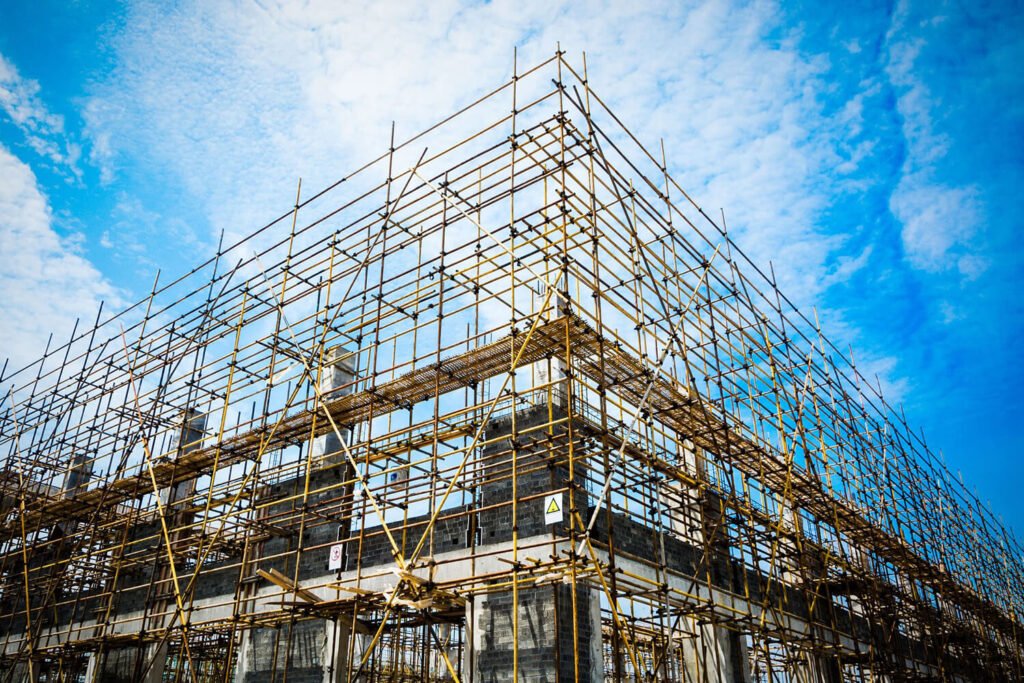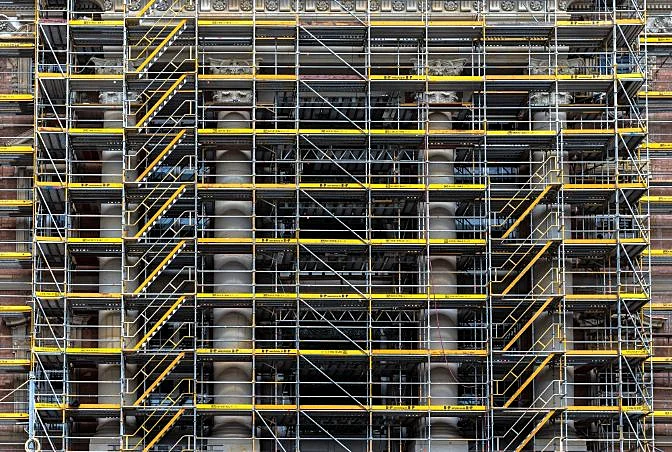Safe and Durable Scaffolding Guildford for Your Upcoming Construction Work
Safe and Durable Scaffolding Guildford for Your Upcoming Construction Work
Blog Article
Discovering the Various Sorts Of Scaffolding Utilized in Construction Jobs
The building market relies greatly on various types of scaffolding to fulfill particular job demands, each offering unique benefits and applications. Typical frame scaffolding provides a tough foundation for general jobs, while put on hold scaffolding is vital for service skyscraper structures. Various other choices, such as system and rolling scaffolding, accommodate effectiveness and flexibility, specifically. The cantilever alternative proves invaluable in metropolitan settings where space is constricted. Comprehending the subtleties of these scaffolding kinds is crucial for optimizing safety and performance on building and construction websites, prompting a more detailed exam of their unique qualities and applications.

Traditional Structure Scaffolding
Standard framework scaffolding is just one of the most widely utilized methods in the construction market because of its toughness and flexibility. This system includes vertical and horizontal structures that are put together to produce a steady system for materials and workers. The major elements include vertical blog posts, straight ledgers, and diagonal braces, which with each other supply a strong structure that can sustain considerable tons.
Among the crucial advantages of typical framework scaffolding is its adaptability to numerous building jobs, ranging from household buildings to large business structures. The modular layout enables very easy assembly and disassembly, making it reliable for both long-term and temporary projects. In addition, the system can be customized in elevation and size, fitting various building layouts and site problems.
Safety is paramount in scaffolding applications, and traditional structure systems are geared up with guardrails and toe boards to stop falls and make sure worker security. Routine examinations and adherence to safety policies are important in maintaining the honesty of the scaffold (Scaffolding). Overall, traditional framework scaffolding stays a basic choice in the construction industry, offering a trusted system for labor and enhancing total task performance

Suspended Scaffolding
Put on hold scaffolding supplies an one-of-a-kind option for building and construction tasks that call for access to elevated surface areas, specifically in circumstances where conventional frame scaffolding may be impractical. This kind of scaffolding is typically put on hold from the roofing or upper levels of a framework, utilizing a system of ropes, platforms, and sheaves to create a functioning area that can be adapted to different heights.
Among the primary benefits of suspended scaffolding is its adaptability. It can be quickly repositioned or lowered to suit modifications in construction needs, making it suitable for tasks such as home window installation, façade job, and maintenance on skyscrapers. Additionally, the minimal footprint of suspended scaffolding enables much better use ground space in city environments, where area is often restricted.
Safety and security is a vital factor to consider in the use of suspended scaffolding. Proper rigging and anchoring systems have to be employed to make sure stability and protect against accidents. Operators should likewise be trained in the safe use of this equipment. On the whole, put on hold scaffolding gives a reliable and efficient service for accessing hard-to-reach locations in numerous building scenarios, enhancing both performance and safety and security on website.
System Scaffolding
System scaffolding, typically considered a contemporary solution in the scaffolding industry, includes pre-engineered parts that can be promptly assembled and adapted for numerous building and construction projects. Scaffolding. This type of scaffolding is identified by its modular layout, which enables versatility and efficiency on work websites, fitting structural needs and various elevations
Normally made from high-strength steel or aluminum, system scaffolding provides enhanced durability and security. The parts consist of vertical posts, straight journals, and angled braces, which interconnect firmly, guaranteeing a robust structure. The style find out here frequently integrates standardized fittings, streamlining setting up and disassembly processes, thereby reducing labor time and prices.

Rolling Scaffolding
Rolling scaffolding is a versatile choice to conventional fixed scaffolding, developed for movement and simplicity of usage on construction sites. This kind of scaffolding is composed of a platform supported by frames with wheels, allowing workers to conveniently relocate it as required. The mobility feature dramatically enhances productivity, as it decreases downtime linked with constructing and disassembling fixed scaffolding.
Usually built from light-weight materials such as aluminum or steel, rolling scaffolding supplies a tough yet portable remedy for jobs requiring frequent repositioning - Scaffolding. It is especially helpful in tasks such as paint, drywall setup, and electrical work, where accessibility to numerous heights and places is required
Safety is critical in rolling scaffolding layout, with functions such as securing wheels to avoid unplanned activity when being used, and guardrails to secure workers from drops. Furthermore, scaffolding supplies several designs are adjustable in elevation, accommodating different task demands.
Cantilever Scaffolding

The design of cantilever scaffolding generally involves using brackets or arms secured to a structure or structure, enabling the system to expand outward safely. Safety and security is extremely important; hence, these scaffolds have to be engineered to withstand various loads and ecological problems. Routine assessment and maintenance are necessary to make sure structural integrity and employee security.
Cantilever scaffolding is preferred for its versatility and reliable use area, making it a preferred selection in city atmospheres where space constraints prevail. Additionally, it helps with easier accessibility why not try here to high elevations, eventually adding to the overall performance of building jobs. Similar to all scaffolding kinds, appropriate training and adherence to safety criteria are crucial for workers utilizing cantilever scaffolding.
Verdict
Traditional framework scaffolding supplies stability, while suspended scaffolding uses versatility for elevated tasks. System scaffolding helps with fast setting up, and rolling scaffolding boosts mobility for varying job environments.
Conventional framework scaffolding offers a sturdy foundation for general jobs, while suspended scaffolding is vital for job on skyscraper frameworks.Rolling scaffolding is a flexible choice to typical fixed scaffolding, created for wheelchair and ease of use on building sites. As with all scaffolding types, proper training and adherence to security criteria are critical for employees making use of cantilever scaffolding.
Typical structure scaffolding provides security, while put on hold scaffolding provides convenience for elevated tasks. System scaffolding facilitates fast setting up, and rolling scaffolding improves wheelchair for varying job atmospheres.
Report this page